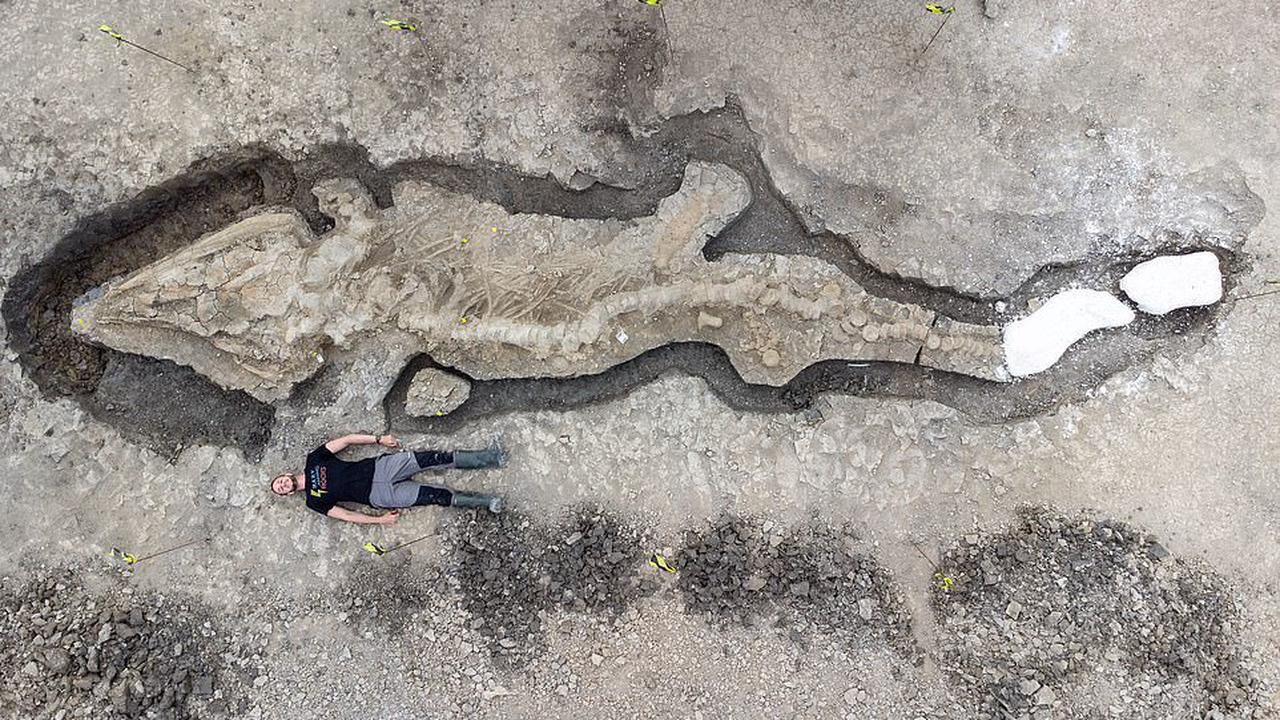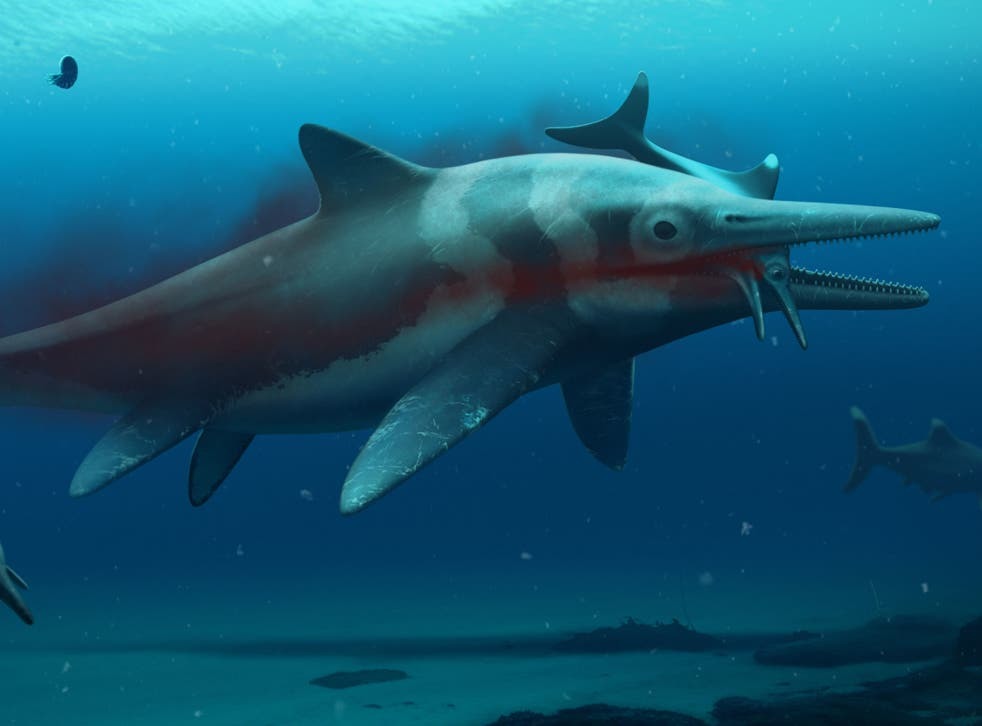A giant 9.7-meter-long sea dragon found at the bottom of a lake in England has been hailed as one of the best finds in the country’s history.
Researchers found the giant Ichthyosaur sea dragon at the bottom of Lake Rutland in the Midlands, England. It is the largest and most complete skeleton ever discovered in British archaeological history.

A complete skeleton of a giant sea dragon has been discovered at the bottom of the lake
The skeleton is nearly 10 meters long, has a skull weighing one ton, and lived about 180 million years ago. The researchers discovered the skeleton in the lake as they drained the water to improve the habitat for the animals in the lake.
Joe Davis, 48, from Leicestershire and Rutland Wildlife Trust, who found the skeleton, said: “When our team discovered the skeleton was quite complete and lifted it with a tractor, I was shocked. because the dragon is really big, I’m 1.8 meters tall”.

Dean Lomax, an expert on ichthyosaurs from the University of Manchester, said it was one of the greatest finds in British paleontological history.
“Although there are many ichthyosaur fossils found in the UK, this is the largest, most complete skeleton. The discovery is unprecedented,” said Dean Lomax.

Image of simulated sea dragon Ichthyosaurs has a similar appearance to dolphins
Ichthyosaurs sea dragons are marine reptiles, first appearing about 250 million years ago and extinct 90 million years ago, with large sizes, up to 25 meters in length, in body shape quite similar to dolphins.
Ichthyosaurs were carnivores that dominated the seas during the age of the dinosaurs, which became extinct about 90 million years ago.
They appeared during the Triassic, peaked during the Jurassic, and disappeared during the Cretaceous. These reptiles appeared before the first dinosaurs appeared, often misidentified as aquatic dinosaurs. Scientists calculated that Ichthyosaurs had a speed of 36 km/h.

In August 2017, scientists discovered an incomplete embryo less than 7 cm long, the fossil part includes vertebrae, a leg, ribs and several other bones. There is evidence that the fetus is still developing in the womb at the time of death. The first fossilized skeletons of ichthyosaurs were discovered in the early 19th century.
In the 1970s, two incomplete and much smaller ichthyosaurs were discovered during the initial construction of Lake Rutland.








